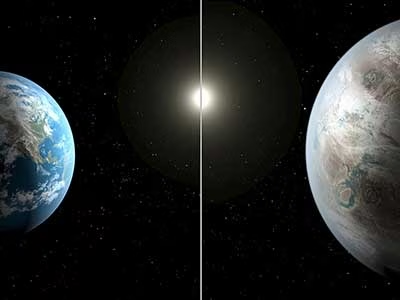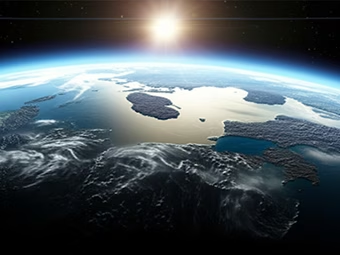Is There Life Out There? Exploring the Newly Found Twin Planet
Beyond Our Solar System: Discover the New Habitable Exoplanet
Reading time : 1 minute,
Discovery Chepe Id-792-TEC
Published in
08-15-2025

Artistic rendering of GJ 1002 b, one of the most Earth-like potentially habitable exoplanets discovered, located just 16 light-years away in the constellation Cetus.
In the quest to find an Earth twin, the exoplanet that most closely resembles our own in terms of habitability and resemblance, scientists have identified several compelling candidates. Among them, GJ 1002 b currently stands out as the most Earth-like habitable world discovered so far.
1- Why GJ 1002 b earns distinction
GJ 1002 b is a super-Earth located just 16 light-years away, orbiting a quiet red dwarf in the constellation Cetus (a calm stellar host reduces harmful flares). It boasts an Earth Similarity Index of about 86%, making it one of the highest among known exoplanets. Its mass is around 1.08 Earth masses, and its estimated radius is 1.03 times Earth's. The equilibrium temperature is approximately 261 K, suggesting relatively mild conditions. Its orbital period is a brisk 10.3 days, placing it well within the star's habitable zone.

The Search for a Habitable World: A Major Discovery in Space.
2- Other strong contenders
a) Kepler-452 b: Orbiting a Sun-like star at a distance similar to Earth, this exoplanet takes about 385 days to complete an orbit. It is a super-Earth with about 1.6 times Earth's radius and lies comfortably in its star's habitable zone. However, it is located approximately 1,800 light-years away, which makes follow-up observations extremely challenging.
b) TRAPPIST-1 e: An Earth-sized world with similar radius, mass, density, and stellar flux, orbiting in the habitable zone of an ultracool dwarf star just 40.7 light-years away. It is considered one of the best potentially habitable exoplanets for follow-up study.
c) Luyten b (Gliese 273 b): A super-Earth with around 2.9 Earth masses and an estimated radius of about 1.5, located only 12 light-years away. It receives roughly 6% more stellar flux than Earth and has an equilibrium temperature close to our planet's, around 259 K.
d) Wolf 1069 b: With a mass of about 1.26 Earth masses and a radius of 1.08, this exoplanet lies in the habitable zone of a red dwarf 31 light-years away. Its equilibrium temperature is around 250 K, but it is likely tidally locked, meaning one side always faces its star.
3- Comparative summary
a) GJ 1002 b High Earth similarity, nearby, temperate, and a prime target for atmospheric studies.
b) Kepler-452 b Sun-like host, Earth-comparable orbit, but extremely distant and larger in size.
c) TRAPPIST-1 e Earth-sized and density-aligned, reasonably close, promising but in a crowded planetary system.
d) Luyten b Close by, moderate in mass, Earth-like irradiance, though slightly larger in size.
e) Wolf 1069 b Near and terrestrial-like, but possibly tidally locked.
While several exoplanets show promise as Earth-like habitable worlds, GJ 1002 b currently stands out. Its combination of similar mass and size, moderate temperature, high Earth Similarity Index, and proximity make it the most compelling Earth twin candidate discovered to date. Ongoing and future observatories may soon reveal more about its atmosphere and habitability potential, perhaps bringing us one step closer to finding a world truly like home.
For further reading:
NASA Exoplanets
NASA Exoplanet Archive
See Also
Discovery Chepe
Most read...















